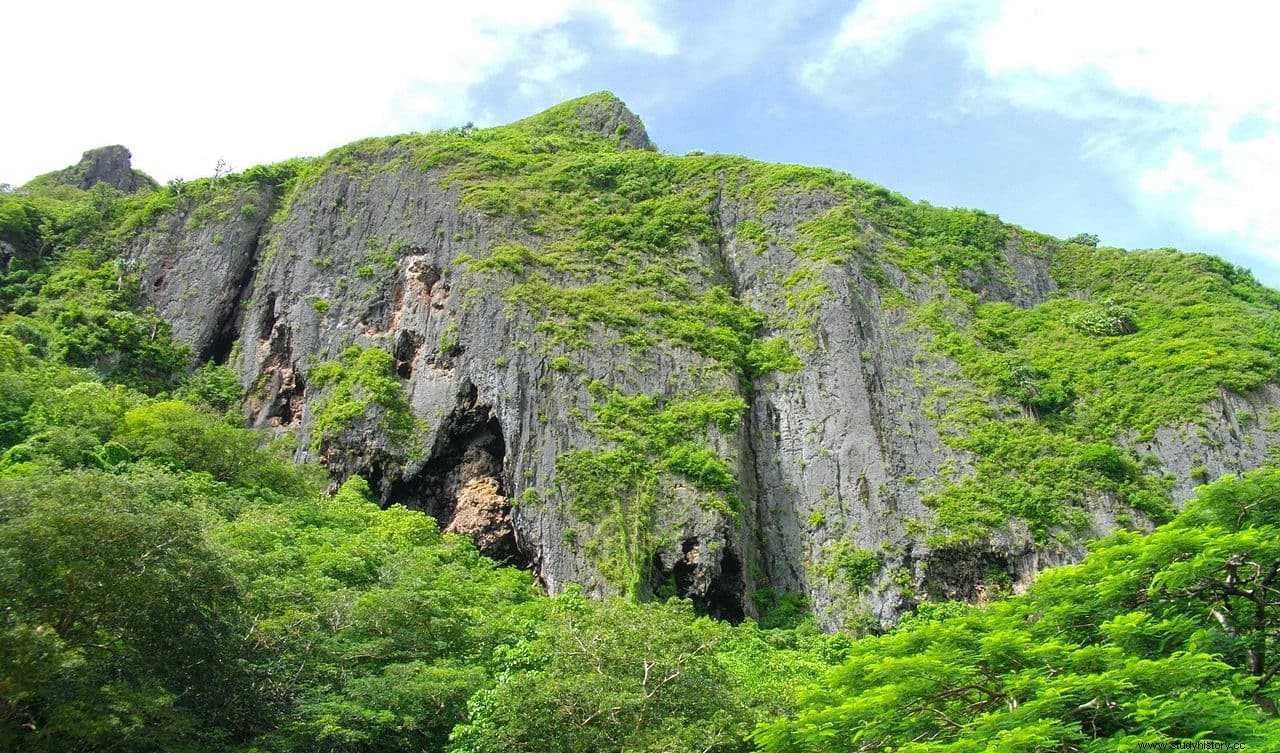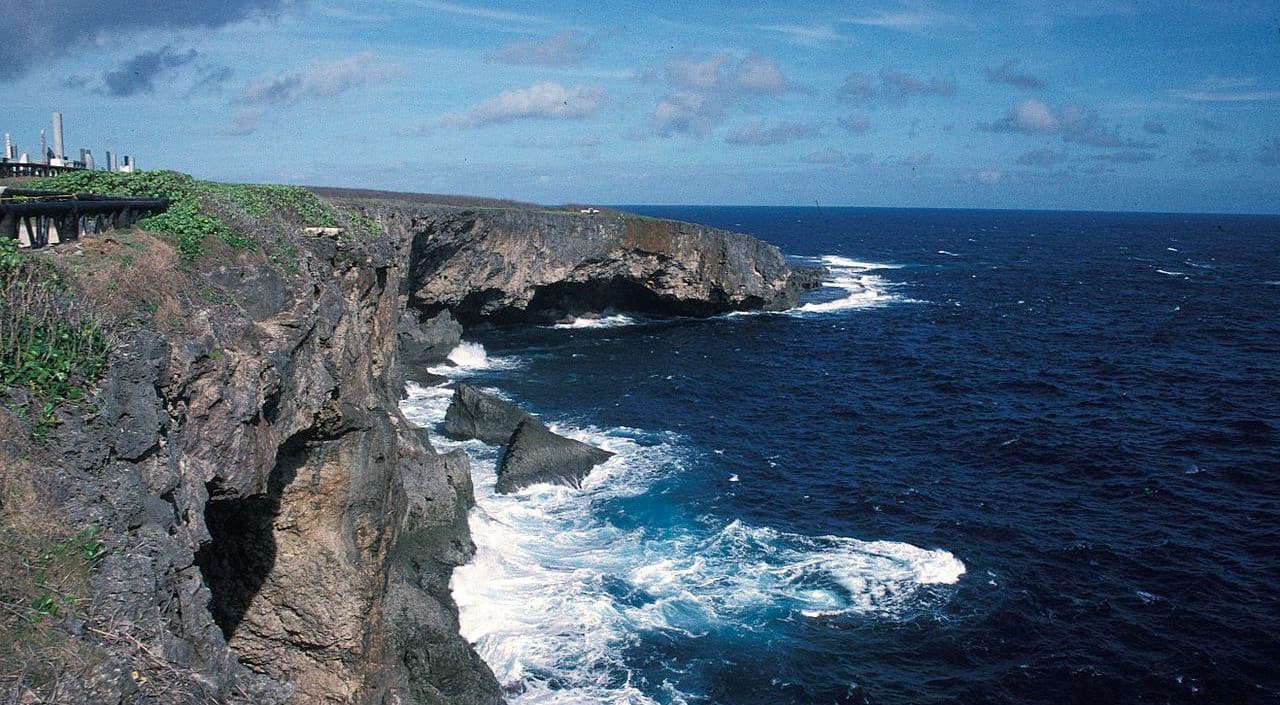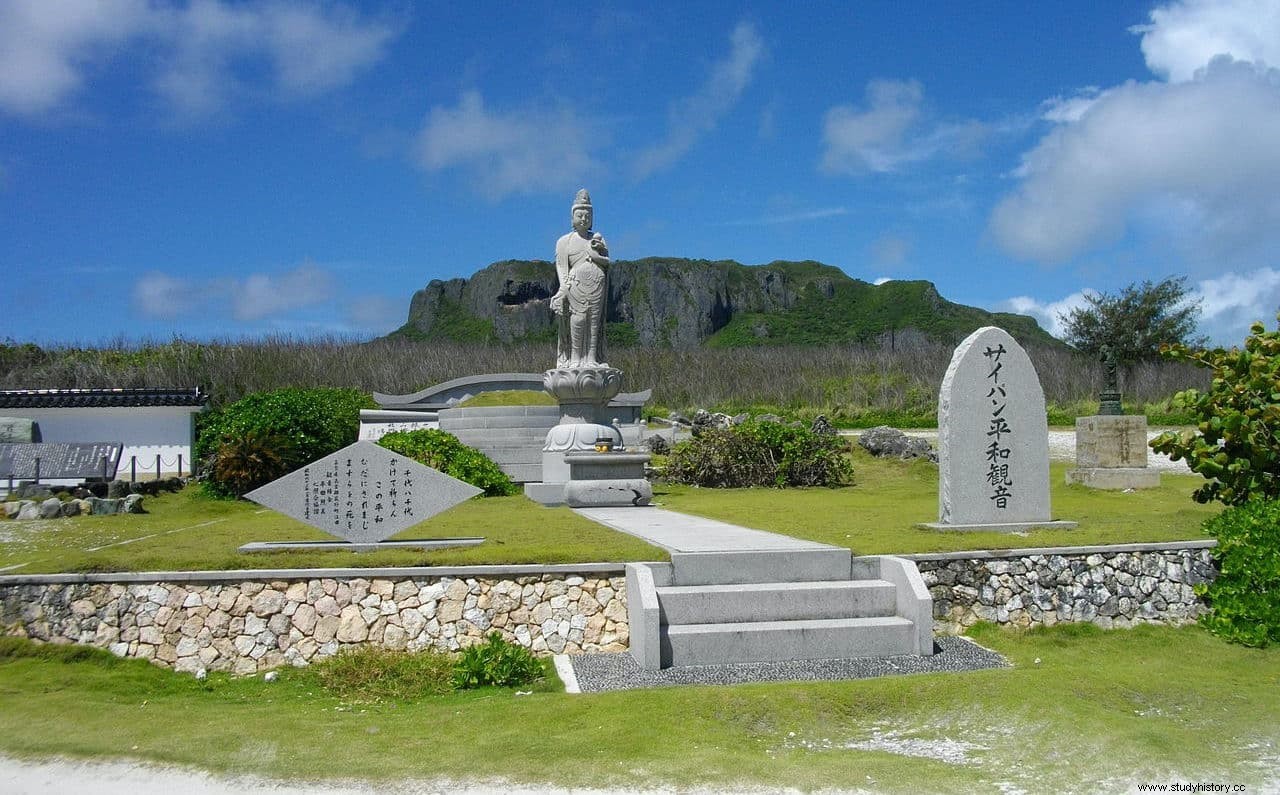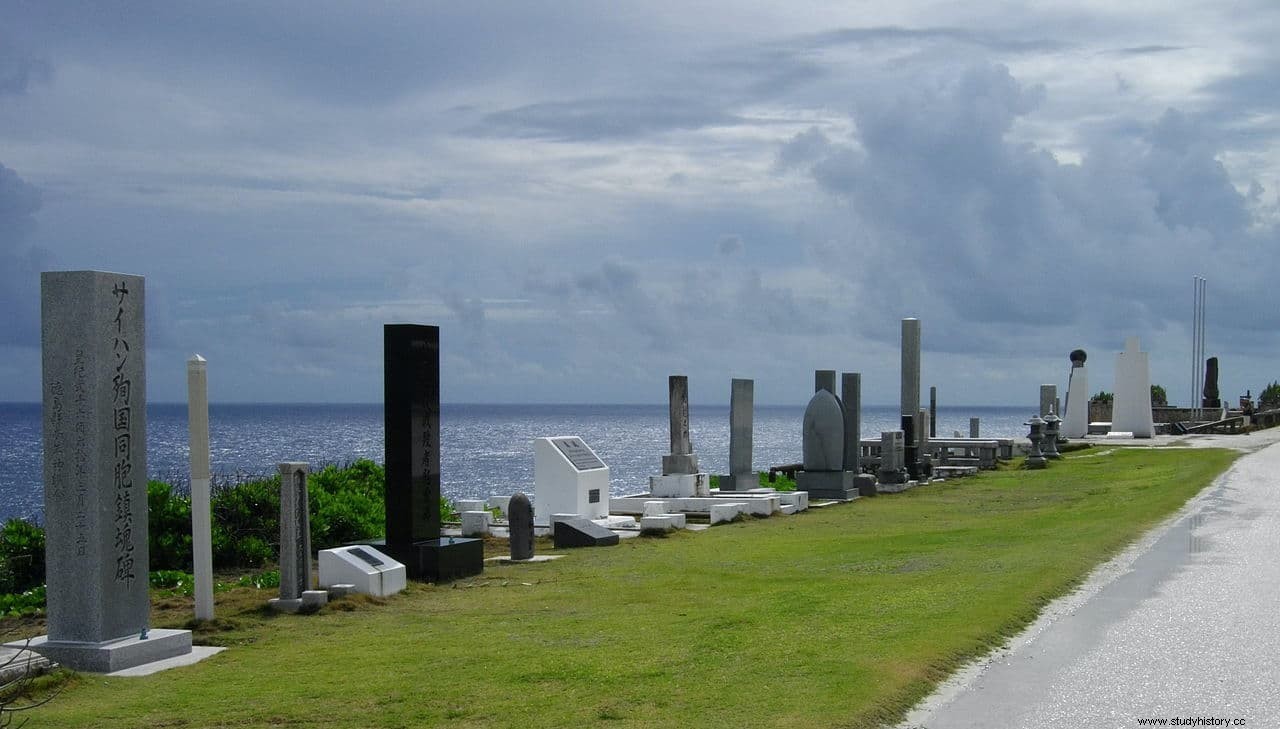The Battle of Saipan took place between June 15 and July 9, 1944, on the largest of the Mariana Islands, the northernmost of Micronesia in the Pacific Ocean.
It was a complete disaster for Japan, as the United States landed and began a sweeping advance, using artillery-backed flamethrowers and machine guns to clear hideouts, caves and caverns, from which the Japanese launched their failed nightly counterattacks.

The defeat and loss of its naval aviation and three of its aircraft carriers in the Battle of the Philippine Sea, which began just four days after the Allied landing on Saipan, left Japan without options to send reinforcements and supplies to the island, dooming defenders to disaster.
Japanese propaganda, moreover, had long warned the population of the brutality and barbarism of US soldiers. So it's not surprising that the Japanese civilians on Saipan thought that the American devils would rape and devour the women and children among other niceties, once they took control of the island.

In this way, once they saw everything lost, between July 8 and 12 thousands of Japanese soldiers and civilians headed for the cliffs and jumped into the void to end their lives.
The Americans tried to prevent it, but it was almost impossible. In a previous article we told the story of Guy Gabaldon, nicknamed the Pied Piper of Saipan , who managed to convince more than a thousand Japanese that the Americans were not savages, thus avoiding his death.
In the end, of the nearly 30,000 Japanese dead during the battle and capture of Saipan, almost 9,000 are believed to have died by suicide at two points, known as Laderan Banadero and Banzai Cliff, both on the northern tip of the island, where the Japanese they had been pushed before the American advance.

Laderan Banadero is situated above the Marpi Point Airfield, built in March 1944 by the Imperial Japanese Navy. It has an altitude of 220 meters above sea level.
At his feet, some witnesses claim to have seen belts of bodies, and others speak of thousands. Today the place is known as Suicide Cliff .
Banzai Cliff (Banzai Cliff ) is very close to the previous one, at one end of the airfield, with the difference that this is a cliff that overlooks the sea, and therefore many of those who jumped from here did not die and were captured or rescued by US ships. 
In 1976 both places were included in a protected park, and have become places of pilgrimage for many visitors to Japan. The area, about 3.6 hectares in size, was included in the United States National Register of Historic Places.
In both there are separate memorials, and the entire coast of Banzai Cliff is dotted with the cenotaphs of those who lost their lives there.
